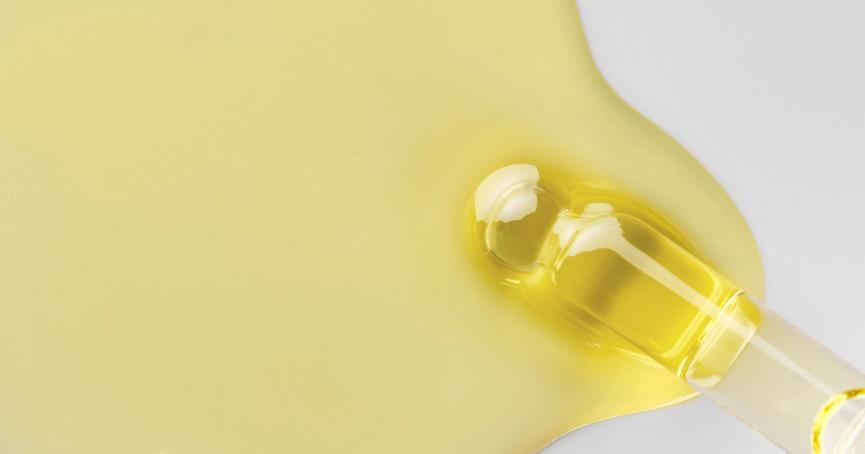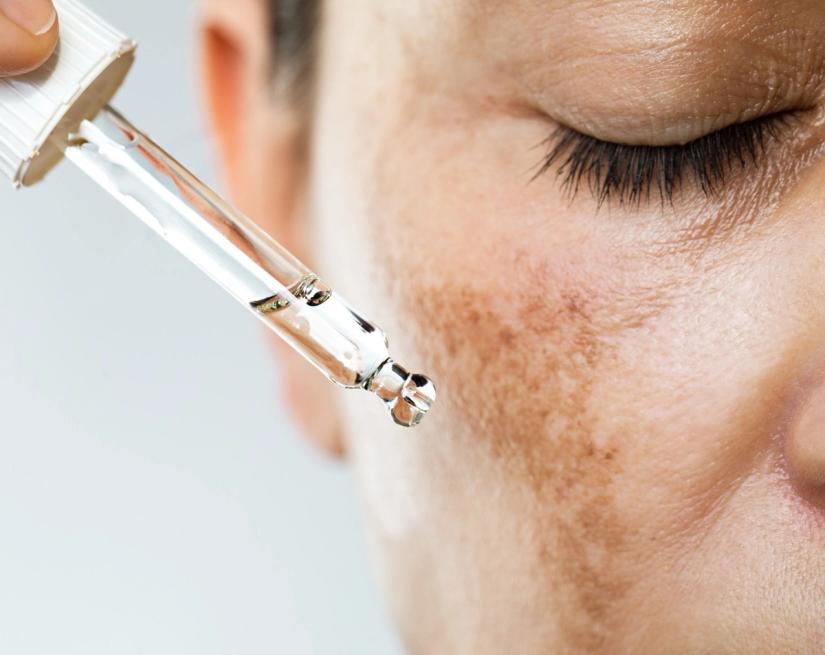skin care
Benefits Of Face Oil For All Skin Types
Maria Giulia Simonazzi | International Training Manager
8 min read

Argan oil, rosehip oil, jojoba oil, grapeseed oil—the list goes on. Which face oil should you choose? How do you know which facial oils work best for your unique skin type? How do you integrate face oils into your routine for maximum effectiveness?
The world of skincare is diverse with a tremendous range of products to choose from—and the options can be pretty overwhelming.
Referring to Google for facial oil benefits can lead you down a complex journey of chemistry lessons and self-proclaimed expertise. So we’re making it easy for you with a simple breakdown of face oils and facial oil benefits.
What Are Face Oils?
All skin types, including sensitive skin, can reap the benefits of facial oil products. Face oil ingredients function as emollients, which means they strengthen our skin barrier and prompt our skin to generate smooth, rejuvenated skin cells.
Plant oils are rich in antioxidants, which are critical for neutralizing free radicals and reversing the damage caused by the sun’s UV rays and environmental pollutants. These ingredients restore our skin’s natural strength and firmness to promote healthy, radiant skin.
Some of the most popular face oils in skincare include:
- Rosehip oil
- Jojoba oil
- Argan oil
- Grape seed oil
- Tea tree oil
- Avocado oil
- Marula oil
- Squalane oil
- Evening primrose oil
While face oil skincare products are often diluted with soothing ingredients and are considerably gentle on the skin, it’s important to note that some essential plant oils are extremely potent. Use plant oils with caution and do not apply them directly on the skin without a carrier oil, like argan oil, rosehip oil, jojoba oil, or grapeseed oil.
Facial Oil Benefits
Facial oils work alongside the skin’s natural oils to balance skin complexion, lock in moisture, and reduce the skin’s natural sebum production—along with a multitude of other benefits.
Facial oils that contain essential fatty acids, like linoleic acid, linolenic acid, oleic acid, palmitic acid, and stearic acid, provide us with the fundamental components that strengthen our skin’s outer, protective barrier. This skin barrier reinforces our cell walls, locking moisture into the skin and preventing water evaporation. These fatty acids penetrate through layers of skin providing targeted benefits to the areas that need it most.
Thanks to their rich composition of vitamin C and vitamin E (the quintessential moisturizing vitamins), facial oils are skin-hydrating powerhouses. Vitamin E is also a powerful ingredient to protect against free radical damage.
Facial Oil Benefits For Skin:
- Strengthens the skin barrier to trap moisture and hydrate the skin
- Supports soft and supple skin
- Evens skin complexion (including dark spots)
- Regulates natural sebum (oil) production
- Reduces acne breakouts and blemishes (anti-inflammatory properties)
- Cleanses the skin (antibacterial properties)
- Boosts the skin’s resilience and elasticity
- Neutralizes free radicals to provide noticeable anti-aging effects
- Can improve collagen production
- Reduces fine lines and wrinkles
- Soothes sensitive and irritated skin
- Reduces the appearance of enlarged pores
- Treats rosacea, eczema, and skin rashes
To experience the incredible benefits of facial oils, it’s important that you first understand your specific skin type. Knowing your exact skin type will enable you to choose the best facial oil to fulfill your skin goals.
Identify Your Skin Type to Maximize Face Oil Benefits
Every skin type will react differently to various skincare products. Before you place your next skincare order, make sure those products comply with your skin type.
If you’ve yet to determine your skin type and you aren’t sure how to differentiate between them, you can use either of the following techniques to gain some clarity:
- Technique 1: Nix the make-up and observe your natural skin.
Remove your make up with a cleanser or facial cleansing cream. Pat your skin dry, and wait a half-hour for your skin to return to its natural state. Once 30 minutes have passed, observe your skin. Look at your cheeks, forehead, and nose. If your skin is shiny, this may indicate an oily skin type. Does your skin feel tight or appear flaky? This is a good indicator of a dry skin type. If your forehead is shiny but your cheeks aren’t, you may have a combination skin type. (Shiny cheeks are a good indicator of oily skin.) - Technique 2: Use a blotting paper or oil-absorbing sheet.
Use a blotting paper to pat your face, then hold the paper up to the light to see how much oil is left on the paper. If a trace amount of oil is left on the sheet, or there’s no visible oil at all, this is a good indication that you have dry skin. If you notice some oil on the paper after blotting your nose and forehead, this may indicate that you have a combination skin type. And of course, if your paper reveals a significant amount of oil, you probably have an oily skin type.
Best Face Oils for Each Skin Type
You can’t apply a one-size-fits-all approach to skincare. Everyone’s skin composition is unique, so a product that works for someone else might not work for you. With a better understanding of your specific skin type, you can refine your skincare routine and opt for face oils that complement your skin.
Best Face Oils for Dry Skin
Facial oils are ideal for dry skin, because these oils coat the skin and strengthen our skin barrier. This barrier traps moisture in the skin to prevent water loss. By permeating the skin’s surface, facial oils penetrate deep into our skin layers to provide favorable hydration.
- Argan oil
- Grapeseed oil
- Squalane
- Rosehip oil
Best Face Oils for Oily or Acne-Prone Skin
While some facial oils are infamous for clogging pores and causing more acne breakouts, many facial oils are extremely effective for treating acne. Facial oils that have anti-inflammatory and antibacterial properties can reduce acne-related sebum production and cleanse toxins and bacteria.
- Tea tree oil
- Squalane oil
- Jojoba oil
- Evening primrose oil
Best Face Oils for Oily Skin
As counterintuitive as it sounds, face oils can work wonders for oily skin. If you have an oily skin type, the last thing you probably thought of adding to your skincare routine was more oil. Surprisingly, face oils can complement our skin’s natural oils by balancing oil production.
- Jojoba oil
- Tea tree oil
- Squalane oil
- Marula oil
Best Face Oils for Combination Skin
Facial oils are beneficial for regulating combination skin as many of them have natural anti-inflammatory and antibacterial properties. These ingredients are excellent for unclogging pores, removing acne-causing bacteria, reducing oil production, and hydrating the skin.
- Grape seed oil
- Tea tree oil
- Jojoba oil
- Marula oil

How to Benefit from Face Oils
When face oils are applied on the skin, they build a protective coat that locks the underlying products into our skin. The emollient properties in face oils make these oils the perfecting moisture-sealing ingredient to layer on top of a humectant. Face oils are great at improving skin elasticity for this reason.
Humectants are substances that function to preserve water and moisture in our skin. One of the most commonly used skincare humectants is hyaluronic acid, which can attract and retain over 1,000 times its weight in water.
Dermatologists and dedicated skincare gurus recommend applying a hydrating serum with hyaluronic acid under a face oil. Don’t apply your face oil until your skin has absorbed the hyaluronic acid. This allows the facial oil to create a seal on the outer layer over the hyaluronic acid once it seeps into your skin. This skin barrier prevents water loss, as moisture can’t evaporate through the face-oil barrier.
You can apply a facial oil in the morning and at night. Unlike some other skincare ingredients—we’re looking at you, retinol—facial oil ingredients shouldn’t increase your skin’s sensitivity to the sun or heat, so they’re safe to apply in the morning.
Depending on how concentrated your facial oil product is, applying 2 to 3 drops of oil is usually sufficient. After your skin has absorbed the facial oil, and you’re reveling at your noticeably radiant skin, you can apply a moisturizer for additional hydration.
Applying your skincare routine from lightest weight (made of smaller molecules) to heaviest weight (made of larger molecules) is a good rule for layering skincare products. Small-molecule ingredients can’t penetrate through large-molecule ingredients to reach the skin, so small-molecule ingredients need to be layered first. Otherwise, large-molecule ingredients will sit on top of the skin, preventing overlying ingredients from reaching the skin.
Add a Face Oil Into Your Skincare Routine
The molecules that make up facial oils are larger than the molecules that make up many serum and acid skincare products, but facial oil molecules are smaller than the molecules that make up most creams and moisturizers. This means your face oil needs to be layered after serums, but before heavy creams or moisturizers.
As always, be sure to end your skincare routine with a layer of sunscreen (at least SPF 30). Allow your skin to fully absorb the sunscreen before applying a layer of make-up. While many skin care products strengthen the skin barrier to provide additional protection from sun damage, no skincare ingredient should completely replace sunscreen.
With a seemingly endless variety of facial oils to choose from, and countless facial oil benefits to experience, these hydrating and soothing ingredients deserve a spot in your skincare routine. No matter your specific skin type or skin issues, face oils can soften, strengthen and restore your skin health, while targeting and treating undesirable skin conditions. Get your healthy glow back and see which face oil works best in your skincare routine.



